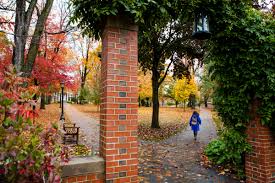20 Ways To Make Your School and Classroom Environmentally Friendly

You can do numerous things as a teacher to make your classroom and school more environmentally friendly. The endless possibilities include recycling, gardening, installing solar panels to power your school, and obtaining a green seal. Teaching students about environmentally friendly methods also spark a lifetime interest in preserving the environment. These concepts aid in laying the foundation for a green classroom and school. What will you begin right away?
- Start a green club.
Identify kids who are motivated to make their school more environmentally friendly. As soon as they’ve established a little objective, assist them in thinking of more expansive objectives. Use the advice here to succeed.
- Hold a contest for the best recycling bin decoration.
Get the recycling bins cleaned up with the help of the entire school. Give each class the assignment of decorating or creating their custom containers. Display them and ask the children to vote for their favorite.
- Obtain grants
Find grants that provide funding for green school programs and submit an application.
- Use recycling containers in inventive ways.
Make your bin stand out by going beyond the conventional blue bucket. Test out this ravenous recycling monster. Or, stay super-organized with a recycling station that includes bright bins with labels specific to paper, plastic bottles, cans, and cardboard. More pupils (and staff) will desire to participate in recycling the simpler and more enjoyable it is.
- Choose a day for garbage collection.
Make it a weekly, monthly, or annual occurrence. Students become more conscious of where they’re leaving their garbage when they go outside and observe firsthand how much rubbish ends on the ground.
- Include houseplants
According to studies, indoor plants organically filter the air and offer health advantages like reducing colds and better conduct. Start with simple-to-grow plants like golden pothos, jade, English ivy, spider, and snake. Encourage young gardeners by involving them in plant maintenance.
- Rally for solar power
Yes, it is expensive, but it is a worthwhile method for a school to go green. As per EnergySage, solar is the least expensive energy source and cuts down loads of cash. Schools often have flat roofs, making solar panels a perfect choice. Get your admin on board and do some research!
- Perform a trash audit and get dirty
Give the students some rubber gloves and let them get to work! Dump garbage cans onto a tarp to determine how many recyclables were destined for the landfill. Add up all the lost stuff, then let the school know the total.
- Monitor your development
When you participate in Recycle Rally, keep an eye on the recycling impact at your school. It’s a simple approach to organizing your work and setting goals.
- Boost the air quality
An environment that is cozy, safe, and secure is crucial. Problems could arise in outdated ventilation systems in old schools. Utilize the advice from the Environmental Protection Agency’s Action Kit to start a campaign to improve air quality.
- Use natural, eco-friendly materials to clean.
Start by using eco-friendly cleaning supplies in your classroom. Read the labels carefully and pay attention to any prominent cautions or warnings. This suggests that potentially dangerous compounds may be present. But encourage other educators and the management to examine the materials used all across the school, from how the dining tables are cleaned to the gym floors.
- Create an obstacle course out of recyclables.
- Hold a protest in favor of lunchtime use of reusable containers.
That’s a lot of plastic between sandwiches, snacks, and leftovers during lunchtime. Containers made of glass or stainless steel are available in various sizes and are ideal for school meals. Encourage students to begin utilizing them.
- Establish a zero-waste classroom.
Start slowly if this seems a little severe. Consider attempting a zero-waste day or week to see how it goes. The kids will be completely on board if you create a fun task with a small incentive.
- Growing a garden.
On the school’s campus, choose a little area for a garden. Get students involved right away by letting them decide on the storyline. Make it a teaching opportunity by having them choose the optimum location based on soil type and light requirements. Grow vegetables and show children how simple it is to grow their food.
- Perform an energy audit.
Analyze and reduce energy use in your classroom. Ask kids to devise simple methods to save money, like turning off laptops at night.
- Ask students what issues most concern them by conducting a survey
Find out what matters most to students and their parents: recycling, adding energy-efficient lighting, or moving to eco-friendly cleaning supplies. Send out a quick survey.
- Encourage students to bike or walk to school
To encourage kids to use green transportation to school, such as walking, bicycling, or riding a scooter, set aside a day, maybe towards the start of the academic year. Kids that experience it early in the year may develop a fondness for the method of transportation and remain with it all year.
- Make a commitment
Encourage kids to sign a pledge to recycle, reduce trash, and conserve energy.
- Commence composting.
Add a compost container to your cafeteria or school to stop food waste. A five-gallon bucket, little pail, or a wood crate will serve just fine for collecting food leftovers. Establish a composting team in charge of daily delivery of the scraps to a larger outdoor container.






